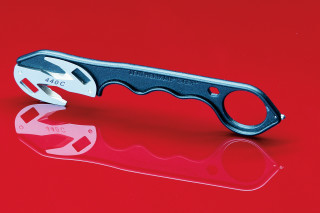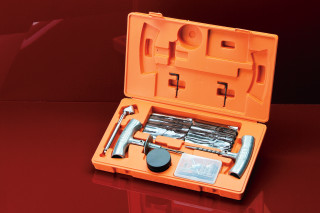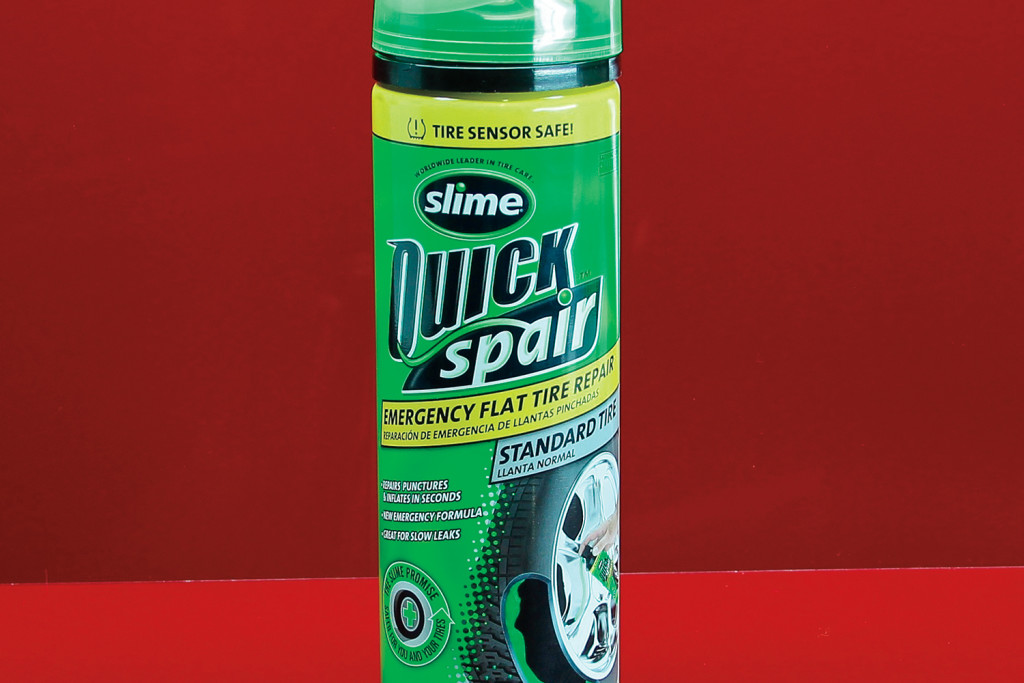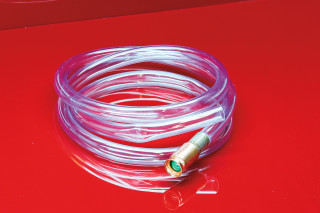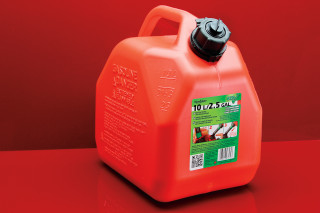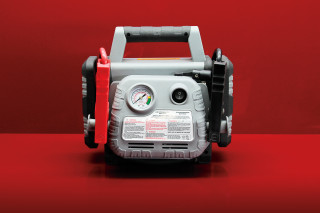In This Article
Imagine that you’re driving home from a long day at work, cruising down the highway at 65mph, and looking forward to relaxing on your couch with a cold beer. You’re only a few minutes from home as you enter an intersection—then, out of nowhere, a truck blows through the red light and blindsides you, slamming into your car’s rear wheel with tremendous force. Your vehicle spins violently out of control, skidding in a wide arc across two lanes.
You try to counter-steer, but it’s too late—an impact with the curb flips your car onto its side, and it topples down an embankment into a river. Your head is spinning and your heart is pounding, as water begins to trickle into the cabin. Upside-down, you fumble for the seatbelt release, but your hands can’t seem to find it.
This terrifying scenario isn’t as unlikely as you might think. An NHTSA study found a national average of 384 drowning deaths per year in motor vehicle accidents, between 2004 and 2007. Meanwhile, other types of vehicle accidents may leave occupants pinned in other equally dangerous scenarios, such as a car that has caught fire.
Under these circumstances, quick access to a rescue tool has the potential to save lives. With such a tool, a passenger can slice through a seatbelt, break the glass out of a window, and crawl to safety before paramedics arrive. They may even be able to use this time to save others from the crash.
About Rescue Knives
This brings us to the topic of the rescue knife, a blade with several added features which could help a user escape a dangerous situation (or rescue others from it). These knives must be effective and reliable for day-to-day use, and when the time comes, they must slice and smash their way to safety.
In order to provide you with some rescue knife options to consider, we narrowed it down to four folding blades which could also double as emergency tools. We obtained a Benchmade Triage, a Kershaw Funxion EMT, a SOG Trident Elite, and a Spyderco Assist for this guide. So, read on to learn our impressions of each of these multi-function blades.
Benchmade Triage
The Benchmade Triage family of blades offers many possible configurations. First, you’ll need to select either a sheepsfoot blade shape, or one that Benchmade calls an “opposing bevel” shape (essentially a blunt cut-off tip to avoid accidental punctures). Then, there’s either a plain or partially-serrated edge, a satin silver or black coated finish, and black or safety orange handle scales. Benchmade even offers an Auto Triage model with a revised design and automatic opening. (It is, however, over $100 more expensive than the original Triage seen here.)
We selected a model 915 Triage with black sheepsfoot blade, partially-serrated edge, and orange handle scales.
The Triage’s blade is constructed of Bohler N680, a resilient steel that features strong corrosion resistance for use in wet environments or even salt water. The blade opens smoothly, either by pushing lightly on the thumb stud, or by pulling back on the AXIS lock bar. We’ve always been fans of Benchmade’s signature AXIS lock, since it allows the knife to be flicked open and shut with one hand, even if the user is wearing gloves. The finely-textured G10 scales also provide superb grip on the handle.
As far as additional features, the Triage has two. First, there’s a hook-shaped cord/seatbelt cutter that folds out of the spine via a thumb stud. It flips out smoothly like the blade, and is held open by a ball detent mechanism (but doesn’t lock). We will say that the short thumb stud on this cutter is a bit tricky to manipulate with gloves or wet hands. Secondly, there’s a very prominent glass breaker tip on the butt of the knife, which is optimally-placed for striking impacts.
All in all, the Triage would make for a great rescue tool or a multi-purpose EDC knife. It’s rather expensive, but it’s made in the USA, and Benchmade’s build quality is consistently very good, so you get what you pay for.
Overall Length – 8.2 inches
Blade Length – 3.5 inches
Blade Width – 1.1 inches
Blade Thickness – 0.13 inch
Handle Thickness – 0.5 inch
Handle Material – G10
Weight – 5.1 ounces
Blade Material – N680 stainless steel
Opening Mechanism – Thumb stud, AXIS lock
Locking Mechanism – AXIS lock
Additional Features – Cord cutter, glass breaker
MSRP – $190 (as tested)
URL – benchmade.com
Kershaw Funxion EMT
Kershaw folding knives have become known for their solid value at an affordable price, and the Kershaw Funxion EMT is no exception. At only $50, it’s definitely not going to break the bank. On top of this, it has the most additional features of any of the four knives in our test. But, more on that later.
The Funxion EMT is a compact knife, with an overall length about 1.5 inches shorter than our other contenders. Nearly half of the 3-inch blade is serrated, but it still handles delicate slicing tasks admirably. Admittedly, the 8Cr13MoV steel wouldn’t be our first choice, as we’ve found it’s not the most durable in the long term, but it’s understandable at this price point.
This blade uses Kershaw’s SpeedSafe assisted-opening technology, and flips open smoothly in the blink of an eye. However, we experienced a problem: the liner lock engages properly when the knife is opened via the flipper, but our knife fails to lock correctly when opened via the thumb stud. It appears that the liner lock on our test knife has a very tight clearance, and requires the extra momentum of the flipper to engage correctly. This concerns us, but it seems likely that this is an isolated quality-control slip-up, and we hardly would have used the thumb studs anyway.
When it comes to added features, the Funxion EMT has two flip-out tool components, giving the knife a total of six additional functions. On one side of the handle, there’s a carabiner clip, which is extremely handy for attaching the knife to a belt loop or key ring. On the other side, there’s a multi-tool component that includes a flathead screwdriver, cord cutter, hex wrench, and bottle opener. Both flip-out tools lock open securely, with integrated lock bars (a great feature). Finally, the knife has a glass breaker just above the deep-carry pocket clip.
We were happy with the Funxion EMT overall, but the improperly-filed liner lock was a letdown. However, despite this one flaw, the knife still works well as long as you only open it with the flipper (which we would have anyway). And, it has a plethora of useful features unmatched by the other knives we tested—that’s saying a lot when you consider it only cost $50.
Overall Length – 7.25 inches
Blade Length – 3 inches
Blade Width – 1.13 inches
Blade Thickness – 0.12 inch
Handle Thickness – 0.63 inch
Handle Material – Fiberglass-reinforced nylon (FRN)
Weight – 4.8 ounces
Blade Material – 8Cr13MoV stainless steel
Opening Mechanism – Flipper with assisted opening, thumb stud
Locking Mechanism – Liner lock
Additional Features – Carabiner clip, cord cutter, screwdriver tip, hex wrench, bottle opener, glass breaker
MSRP – $50
URL – kershaw.kaiusaltd.com
SOG Trident Elite
The SOG Trident Elite line offers several options to choose from: tanto point or clip point, black TiNi coated or satin finish, and plain or partially-serrated edge. We picked out a Trident Elite tanto model, with satin silver non-serrated blade. With an open length approaching 9 inches, it’s the biggest knife in our guide, but the slim handle and light weight make it easy to manipulate.
The blade is constructed of AUS-8 stainless, a good quality steel used extensively by SOG. The assisted-open knife flips open from either side via thumb studs, but the piston lock bar on the handle is not ambidextrous, so lefties will have a hard time closing this one-handed. We do like the inclusion of a safety switch on the handle, since it prevents the knife from opening unintentionally in a pocket or backpack.
The Trident Elite’s fiberglass-reinforced nylon handle features textured rubber inserts and plenty of jimping, which provide a very comfortable and secure grip. There’s also a lanyard hole, and it’s the perfect size for some 550 paracord. A stainless steel SOG logo and decorative stainless bands on the handle add a little extra visual appeal.
SOG’s Trident Elite includes two added rescue features. First, there’s a sharp glass breaker tip on the pivot end of the folded knife. Secondly, there’s a diagonal slot in the handle, which SOG refers to as the Groove. This slot can be used to cut paracord or fishing line while the blade is folded shut. It’s ideal for cutting small cords, but didn’t do as well on thicker materials like fabric straps and seatbelts.
We’d recommend the SOG Trident Elite to anyone looking for a strong, sharp, reliable folding knife at a price that won’t break the bank. We would have preferred slightly better belt cutting performance and an ambidextrous lock release, but those are small nitpicks on an otherwise great blade.
Overall Length – 8.7 inches
Blade Length – 3.7 inches
Blade Width – 1.1 inches
Blade Thickness – 0.12 inch
Handle Thickness – 0.55 inch
Handle Material – Fiberglass-reinforced nylon (FRN) with rubberized and stainless steel inserts
Weight – 3.9 ounces
Blade Material – AUS-8 stainless steel
Opening Mechanism – Thumb stud with assisted opening
Locking Mechanism – Piston lock with safety
Additional Features – Cord cutter groove, glass breaker
MSRP – $87
URL – sogknives.com
Spyderco Assist Salt
The Spyderco Assist family consists of four models. First, there’s the standard Assist with a black handle, and the standard Assist with an orange handle. There’s also a standard Assist model with a black handle and black blade finish. All three of these variants use VG-10 stainless steel, and include a metal plate above the thumb hole, called the Cobra Hood. The Cobra Hood provides added leverage for one-handed opening, and serves as a thumb rest while cutting.
You may have noticed that the knife in these photos has a yellow handle, and lacks the Cobra Hood feature. That’s because it’s a special version of the Assist family known as the Assist Salt. Instead of VG-10 steel, this yellow model uses high-end H1. This is a special steel with added Nitrogen content, and Spyderco states that it’s completely immune to corrosion as a result.
Aside from the special steel, the Assist Salt uses a patented blunt-nose blade shape, which prevents accidental pokes or punctures while using the blade in tight quarters. You’ll also spot Spyderco’s iconic Round Hole, which makes opening the blade easy. A back lock bar on the handle’s spine snaps securely in place, locking the blade open.
Distinct finger grooves on the spine of the blade were inspired by a firefighter from Sweden, and they serve two additional purposes. First, if you grip the folded blade firmly and squeeze, a retractable carbide glass breaker appears at one end of the handle. Additionally, you can open the blade slightly and insert a cord, then squeeze the blade shut to slice through the cord like a pair of scissors. However, this is not very effective for scissor-cutting thin straps and belts, as it just squeezes them into the handle without cutting through.
Finally, two square holes on the handle act as a surprisingly loud survival whistle. Some people scoff at the idea of needing a whistle in a survival situation, but if you’re pinned down off the beaten path and desperately hoping for rescue, you’ll definitely be glad to have one. We’d say this is actually a very useful feature for certain cases.
With exotic steel, an unconventional blunt-nose blade, and an edge that’s 80% serrated, the Spyderco Assist Salt is clearly a specialized tool. If you’re an EMT, paramedic, or search and rescue professional, it would make an excellent addition to your loadout.
On the other hand, if you’re looking for an everyday pocket knife with a few added rescue features, the Assist may be a little too specialized for your needs. However, we could easily see storing one of these knives in a vehicle glove box or roadside emergency kit, so if SHTF, you’ll have a quality tool on hand.
Overall Length – 8.6 inches
Blade Length – 3.7 inches
Blade Width – 1 inch
Blade Thickness – 0.12 inch
Handle Thickness – 0.67 inch
Handle Material – Fiberglass-reinforced nylon (FRN)
Weight – 3.9 ounces
Blade Material – H-1 rust-proof steel
Opening Mechanism – Round hole
Locking Mechanism – Back lock
Additional Features – Scissor-type cord cutter, retractable glass breaker, survival whistle
MSRP – $160
URL – spyderco.com

























